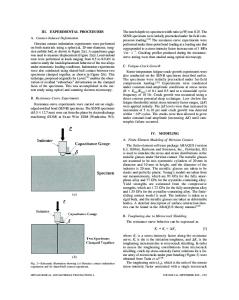A review on cyclic deformation damage and fatigue fracture behavior of metallic nanolayered composites
- PDF / 814,909 Bytes
- 10 Pages / 584.957 x 782.986 pts Page_size
- 30 Downloads / 887 Views
A review on cyclic deformation damage and fatigue fracture behavior of metallic nanolayered composites Guang-Ping Zhang1,a), Fei Liang2, Xue-Mei Luo1, Xiao-Fei Zhu1 1
Shenyang National Laboratory for Materials Science, Institute of Metal Research, Chinese Academy of Sciences, Shenyang 110016, People’s Republic of China 2 Shenyang National Laboratory for Materials Science, Institute of Metal Research, Chinese Academy of Sciences, Shenyang 110016, People’s Republic of China; and School of Materials Science and Engineering, University of Science and Technology of China, Shenyang 110016, People’s Republic of China a) Address all correspondence to this author. e-mail: [email protected] This paper has been selected as an Invited Feature Paper. Received: 7 October 2018; accepted: 7 January 2019
Fatigue performance of metallic nanolayered composites (NLCs) has been gaining more and more attention due to the rapid development in the field of both micro-electro-mechanical systems and high-performance engineering structure materials and the increasing demand for long-term fatigue reliability. Metallic NLCs have exhibited different damage behaviors due to the effect of high-density heterogeneous interface compared with bulk materials and thin metal films. In this review paper, the cyclic deformation damage behavior, fatigue cracking feature, and fatigue properties of some metallic NLCs are reviewed. Effects of length scales, including layer thickness and grain size, on fatigue damage behaviors of the NLCs are revealed, and the transition of the fatigue cracking behavior and the corresponding damage mechanism are discussed. Then, the fatigue properties of some typical metallic NLCs are presented and compared with that of bulk materials and metal thin films. The effect of interface type and grain boundary alignment is also discussed to correlate with fatigue cracking resistance of the NLCs. Finally, some prospective research topics on fatigue performance of metallic NLCs are addressed.
Introduction In recent years, metallic laminated composites have attracted more and more attention due to their superior mechanical properties such as good synergy of strength/ductility and outstanding fatigue properties [1, 2, 3, 4, 5]. The main reason is that the macroscopic layer interfaces with mechanical contrast could achieve effective strain/stress transfer during coordinated deformation [6, 7, 8, 9] and resist the fatigue crack propagation through local delamination and crack deflection/ bifurcation [2, 3]. Thus, many researchers focus on maximizing the interface effect on the mechanical behavior, especially fatigue behavior of metallic laminated composites by tuning structural parameters such as interface bonding strength and layer thickness (h) [10, 11]. With further decreasing h, the nanolayered composites (NLCs) has found a wide range of applications for microelectro-mechanical system (MEMS) components, advanced structural materials, and high-performance coatings due to
ª Materials Research Society 2019
their ultrahigh hardness and st
Data Loading...











